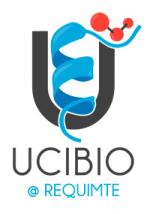The chemistry and biology of gold nanoparticle-mediated photothermal therapy: promises and challenges
- Citation:
- The chemistry and biology of gold nanoparticle-mediated photothermal therapy: promises and challenges, Baptista, {Pedro Miguel Ribeiro Viana} , Nano LIFE, jan, Volume 03, Number 03, p.nr. 1330001, (2013)
Abstract:
Under laser radiation, cells labeled with gold nanoparticles (AuNPs) are believed to suffer thermal damage due to the transfer of the absorbed light from theAuNPsto the cells. This process, which involves complex mechanisms such as the rapid electron–phonon decay in theAuNPs, followed by phonon–phonon relaxation, culminates in the localized heating of both theAuNPsand the cells, setting the rational for the use of these nanostructures, under laser light, in cancer photothermal therapy (PTT). Here, we discuss the chemical and biological aspects of this promising new therapeutic approach, including the advantages over conventional cancer therapies and the challenges that scientists still need to overcome to progress toward translation research.Read More:http://www.worldscientific.com/doi/abs/10.1142/S179398441330001X
Notes:
Sem PDF

